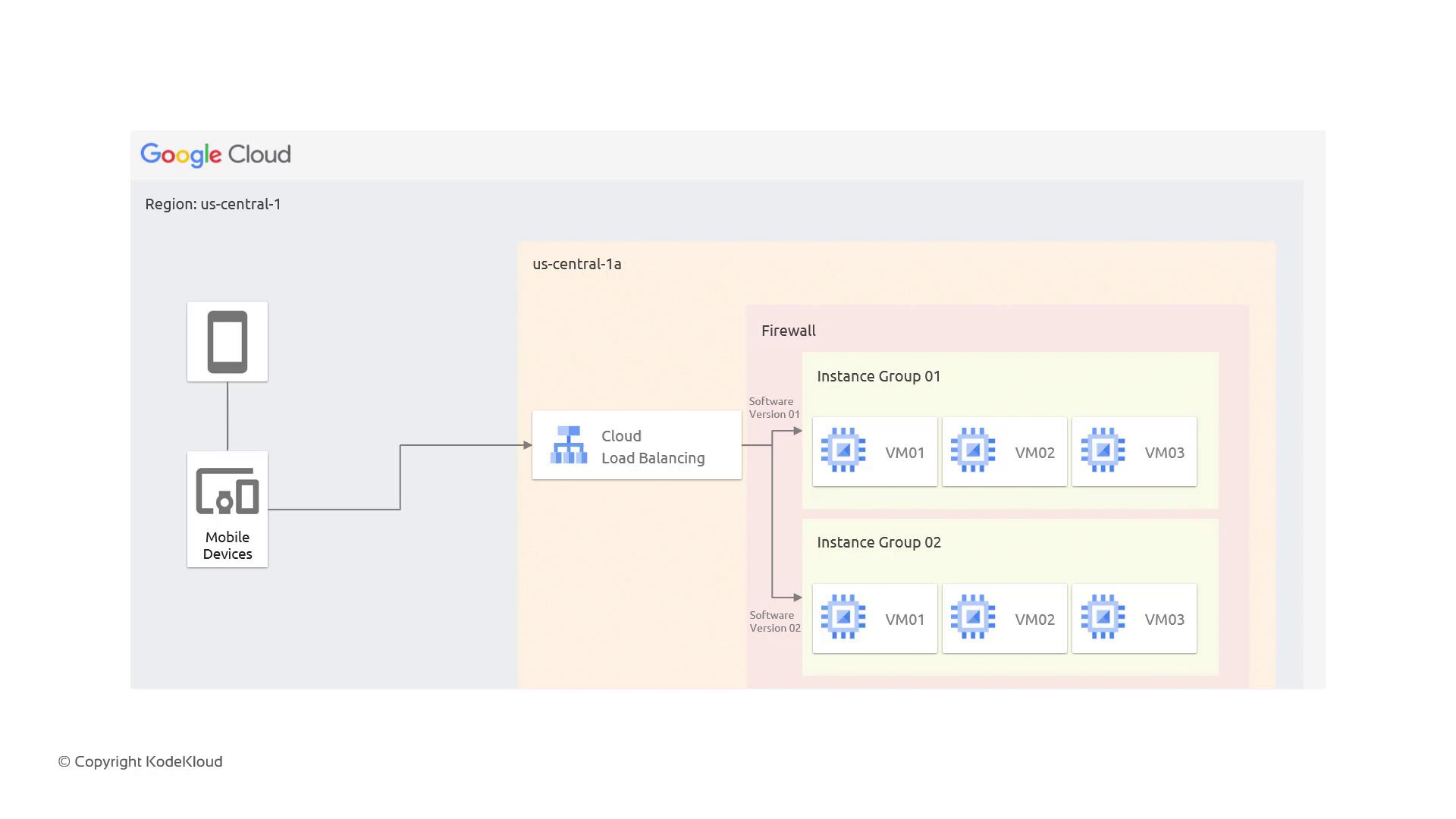GCP Cloud Digital Leader Certification
GCP Compute Part 2
Load Balancer
Welcome to this detailed lesson on load balancing within the Google Cloud Platform (GCP). In this article, we discuss the challenges of routing traffic between different instance groups and demonstrate how GCP’s load balancing solution can help distribute incoming network traffic efficiently and reliably.
Routing Traffic Between Instance Groups
Imagine a scenario where you manage two instance groups—one running software version 01 and the other running version 02. Initially, you might direct all incoming traffic exclusively to the instance group running version 01. Later, as you update your infrastructure or roll out new features, you can gradually shift traffic to the instance group running version 02. This strategy allows you to control traffic routing based on software versions or specific deployment requirements.
Note
This routing approach is applicable not just for managed instance groups but can also be adapted for unmanaged instance groups. You can effectively route traffic between individual compute instances, regardless of group management.
The Role of Load Balancing
Load balancing is the process of distributing incoming network traffic across multiple backend instances. This is essential for:
- Optimizing resource utilization
- Maximizing throughput
- Minimizing response times
- Preventing any single server from being overwhelmed
In the context of GCP, load balancing is especially effective for managing TCP protocol traffic—ensuring that client requests are handled in an efficient and balanced manner.
Below is a diagram that illustrates a typical GCP architecture. In this configuration, mobile devices connect to a cloud load balancer that distributes traffic to two instance groups hosting virtual machines (VMs) in the us-central-1 region:

Next Steps
In the following sections, you will learn more about:
- The intricacies of TCP protocols and their relevance to load balancing
- Various load balancing strategies available in GCP
- How to implement these concepts within your own cloud environment
Note
Keep an eye out for upcoming articles where we delve deeper into TCP protocols, load balancing strategies, and practical implementation tips.
Thank you for reading this lesson. We look forward to exploring more technical topics with you in future articles.
Additional Resources
Watch Video
Watch video content